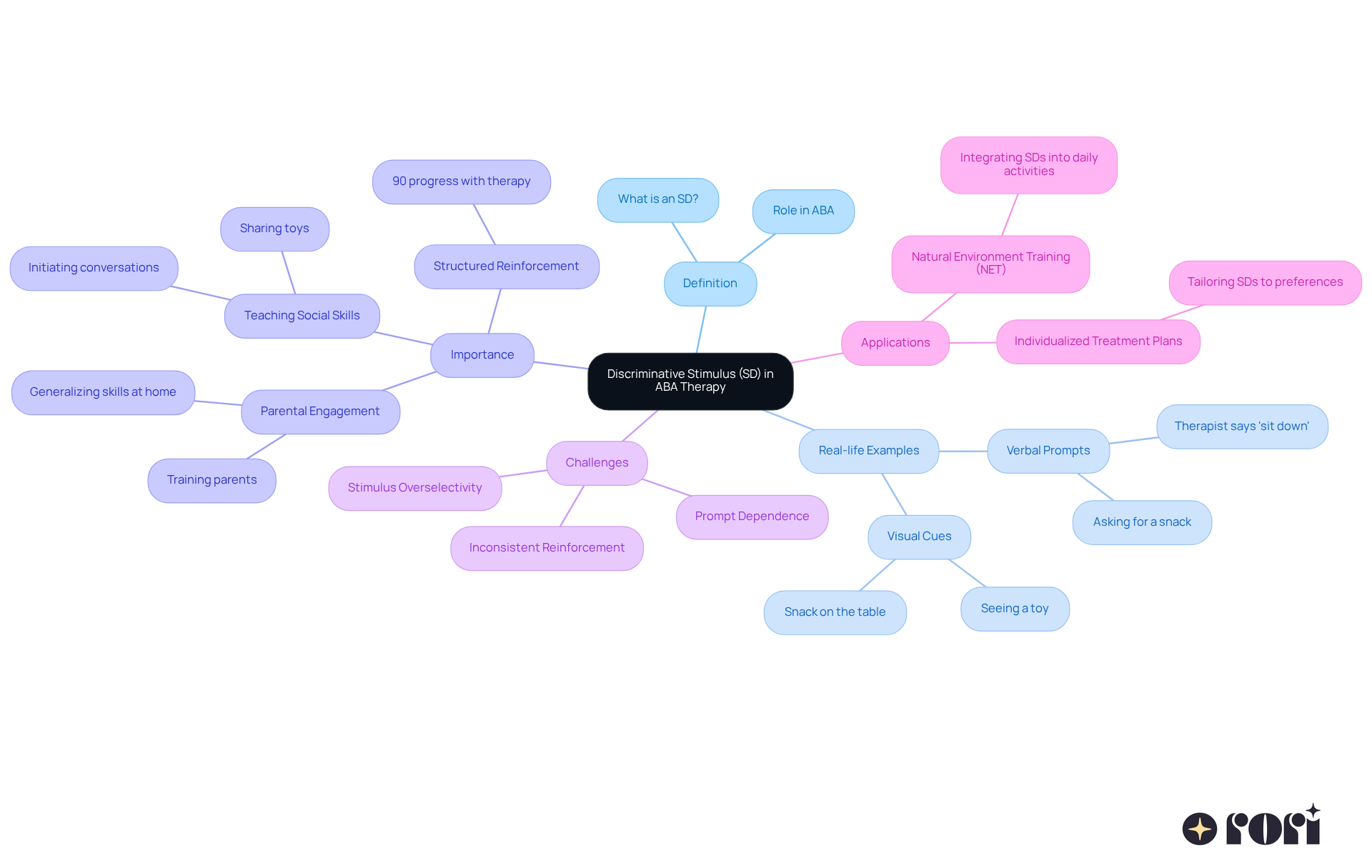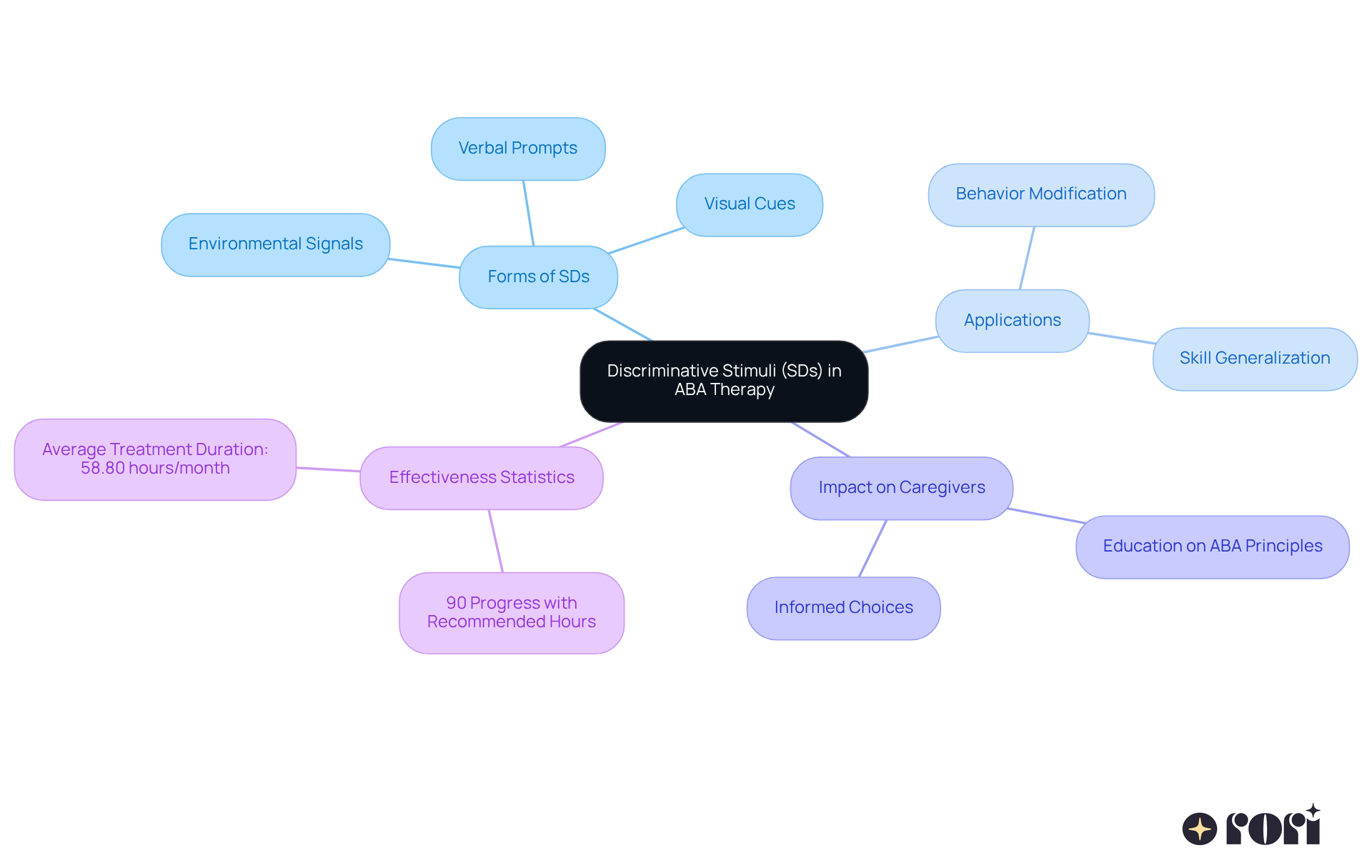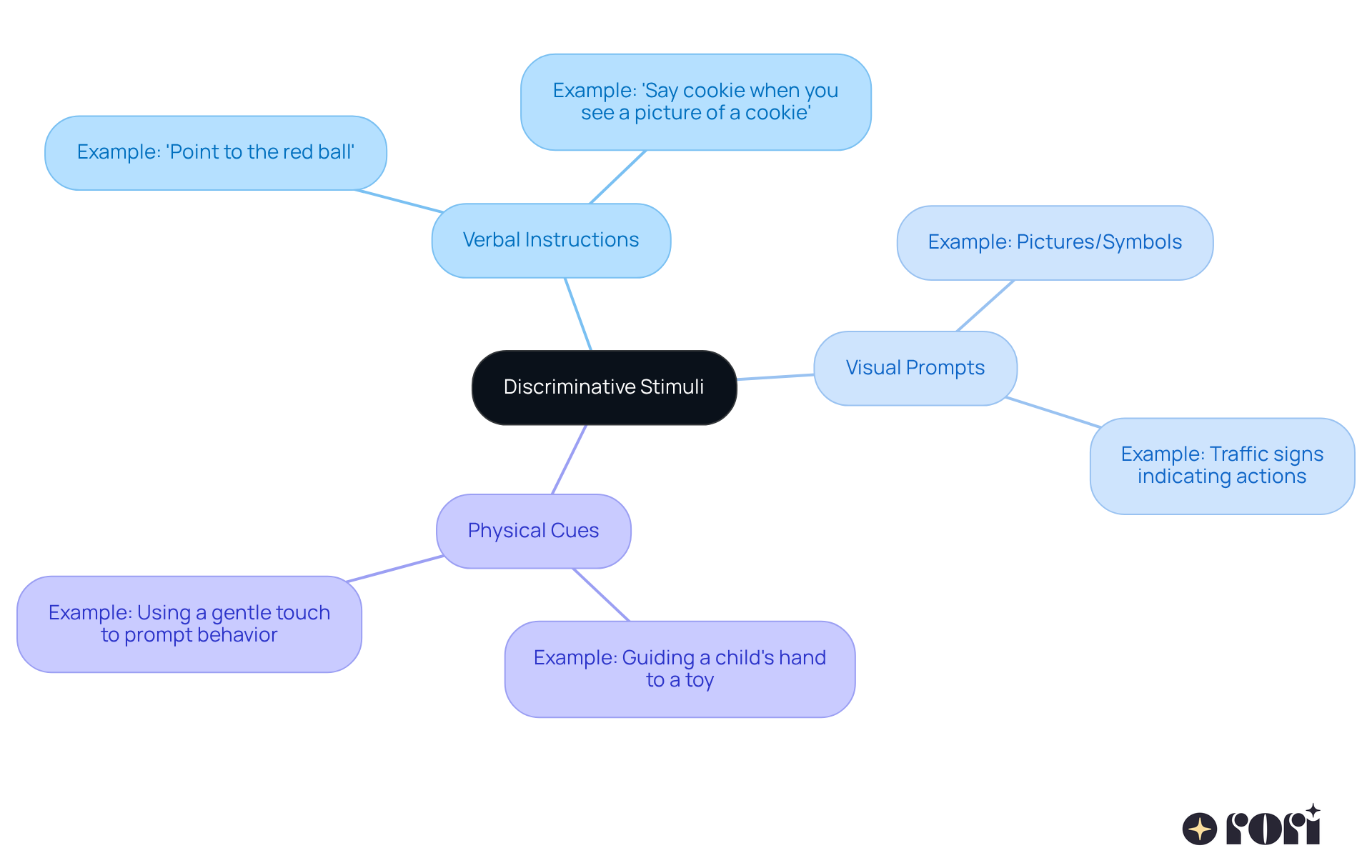Have you ever heard of the term 'SD' in Applied Behavior Analysis (ABA)? It stands for discriminative stimulus, and it plays a crucial role in guiding behavior change. Think of it as a friendly cue that signals when reinforcement is available for a specific behavior. 🌟
In this article, we’ll dive into why understanding SDs is so important for enhancing learning outcomes. They help teach vital communication and social skills, and we’ll share some relatable examples and structured reinforcement strategies along the way. Let’s explore this together!
Understanding the nuances of Applied Behavior Analysis (ABA) can truly be a game-changer for individuals with autism and their families. At the heart of this therapeutic approach is the concept of discriminative stimuli (SDs). These essential cues guide behavior and reinforce learning, making a significant impact on daily life. By unraveling what SD in ABA stands for, you’ll discover how these stimuli clarify expectations, enhance communication skills, and foster independence.
However, the journey of implementing SDs isn’t without its challenges. How can caregivers effectively integrate these strategies into daily life to maximize their child's progress? Let’s explore this together! We’re here to help you every step of the way!
In Applied Behavior Analysis (ABA) intervention, the sd in aba stands for a discriminative stimulus that serves as a specific cue in the environment, indicating to individuals that reinforcement is available for a certain action. It’s like a little nudge, indicating that if they perform a specific action while the cue is present, they might just get a reward or a positive outcome. For instance, when a therapist says 'sit down' to a young child, that verbal prompt serves as an SD, encouraging them to sit with the hope of receiving something nice, like praise or a treat.
Think about real-life examples of SDs in autism treatment. Imagine a young person learning to ask for a snack when they see it on the table. That snack becomes a signal for the desired action! Similarly, during playtime, a therapist might ask, 'Do you want the car?' This not only prompts the child to communicate but also reinforces their ability to express what they want.
The importance of discriminative stimuli in behavior analysis, where sd in aba stands for their role in shaping behaviors and clarifying expectations, shines through. Did you know that 90% of young individuals show impressive progress when they receive the recommended hours of therapy? This really highlights how effective structured reinforcement through what SD in ABA stands for can be. Plus, SDs are vital for teaching social skills, like starting conversations and sharing, guiding individuals toward meaningful interactions.
Incorporating SDs into everyday activities, like in Natural Environment Training (NET), makes learning more relevant and functional. This approach aligns beautifully with the personalized planning and measurable goals highlighted in Rori Care’s program development service, ensuring that each child’s unique needs are met. As Rosie Neustadt wisely points out, "Individual variability demands a tailored approach that recognizes each child’s uniqueness." This is so important when we talk about implementing SDs.
Of course, there are challenges to consider, like prompt dependence and stimulus overselectivity when using SDs in treatment. And let’s not forget about parental engagement! It’s crucial for applying SDs at home, helping skills learned in therapy transition into daily life. By empowering caregivers with ABA principles and strategies, they can actively participate in their child’s development, leading to better behavioral outcomes and stronger support.
In summary, discriminative cues are key players in ABA intervention. They provide a structure for understanding and reinforcing desired actions, ultimately paving the way for significant progress for children with autism. Let’s explore this together!

Discriminative signals are super important in ABA therapy! They provide clear and consistent cues that help guide behavior change. These signals help individuals understand what's expected of them, making the learning process more efficient and effective. For example, when a child learns to ask for a snack, the snack itself can act as a discriminative signal (SD in ABA stands for a cue), encouraging the child to express their request. The link between the SD in ABA stands for the desired actions, which not only strengthens learning but also fosters essential communication skills and independence.
Research shows that when distinguishing cues are consistently paired with positive reinforcement, learning outcomes and social skills improve significantly. By using effective signals, professionals can shape actions, ensuring that kids understand when certain activities will lead to positive results. This approach is especially effective in Applied Behavior Analysis (ABA), where SD in ABA stands for interventions that have a success rate of over 89% in enhancing various developmental areas, including communication and socialization.
You can also see the clever use of discriminative stimuli in different settings, like using visual cues or verbal prompts to encourage desired actions. Imagine a young person learning to connect a picture of a toy with the verbal request for that toy. This reinforces the link between what SD in ABA stands for and the action, helping with behavior modification and enabling kids to express their needs more effectively, leading to greater independence.
Active family involvement in treatment sessions makes these strategies even more effective! Caregivers who understand ABA principles can provide the right support at home, complementing professional help. This involvement helps kids generalize their skills beyond therapy, ensuring they can apply what they learn in real-life situations. Plus, informed decision-making and better behavioral outcomes are fantastic benefits of caregiver education, empowering them to make choices that positively impact their child's development. And let’s not forget, ensuring fair access to treatment services through adequate insurance coverage is crucial for families seeking help for their children with autism.
Let’s explore this together! We’re here to help you every step of the way!

In ABA therapy, sd in aba stands for discriminative stimuli (SDs), which really shine in their effectiveness! They come in many forms, from verbal prompts to visual cues and even environmental signals. For example, a therapist might use a picture of a toothbrush as an SD to inspire a young person to brush their teeth. Similarly, a simple verbal prompt like 'time to eat' signals that it's a good time to gather at the table. These tailored examples not only enhance the learning experience but also promote positive behavior by providing clear guidance, which is what sd in aba stands for.
What’s even more exciting is how SDs help children generalize their skills across different situations. Visual prompts, like charts or images, along with verbal instructions, have shown impressive success in behavior modification. Did you know that ABA therapy is the only scientifically proven treatment for autism that insurance covers? Remarkably, 90% of young individuals make significant progress when they receive the recommended hours of therapy, especially with active caregiver involvement. This highlights the importance of educating caregivers. When caregivers understand ABA principles, they can make informed choices that positively impact their loved ones’ progress.
By weaving these strategies into treatment plans, therapists create a more engaging and responsive atmosphere that fosters independence and social skills development in individuals with autism. For instance, a green light can signal to a child when it’s okay to leave their room, reinforcing the appropriate response to cues. This thoughtful integration of what SD in ABA stands for in therapy not only helps young individuals learn effectively but also supports caregivers, enhancing overall family dynamics and encouraging lasting behavioral improvements. Let’s explore this together!

Discriminative stimuli come in various forms, like verbal instructions, visual prompts, and physical cues. For instance, verbal instructions might be as simple as saying, 'point to the red ball.' Visual prompts can be pictures or symbols that show what to do next. And physical cues? Think of gently guiding a young person's hand to a toy. Understanding these differences helps therapists choose the right stimuli based on each child's unique learning style, which can really boost the effectiveness of ABA therapy.
This personalized approach is a vital part of our program development service. Here, qualified behavior analysts create tailored plans with measurable goals and evidence-based strategies. By sharing these insights with caregivers, we empower them to support their children's behavioral goals effectively. Together, we can align strategies and collect data to make a real difference! Let’s explore this together!

Discriminative stimuli (SDs) are truly essential in Applied Behavior Analysis (ABA), acting as vital cues that help guide individuals toward the behaviors we want to encourage. When caregivers and therapists recognize the importance of SDs, they can set up structured environments that not only boost learning and communication but also promote independence for children with autism.
Throughout this article, we’ve explored the many facets of SDs, showcasing their different forms—from verbal prompts to visual cues—and how effective they are in reinforcing positive behaviors. Real-life examples illustrate how these stimuli clarify expectations and empower individuals to express their needs and desires. Plus, we can’t overlook the role of active caregiver involvement; informed families can make a significant difference in their child's developmental journey.
As we reflect on these insights, it’s clear that using discriminative stimuli effectively can truly transform the learning experience for children with autism. By embracing ABA principles and actively participating in the therapeutic process, families can create nurturing environments that foster meaningful progress. Remember, the journey of understanding and implementing SDs isn’t just about modifying behavior; it’s about unlocking potential for lasting change and enhancing the quality of life for individuals and their families. Let’s explore this together and continue making strides toward a brighter future!
What is a discriminative stimulus (SD) in ABA therapy?
In Applied Behavior Analysis (ABA) therapy, a discriminative stimulus (SD) is a specific cue in the environment that indicates to individuals that reinforcement is available for a certain action. It serves as a prompt for the desired behavior, suggesting that performing the action while the cue is present may lead to a reward or positive outcome.
Can you provide an example of an SD in action?
An example of an SD is when a therapist tells a child to 'sit down.' This verbal prompt encourages the child to sit, with the hope of receiving a reward, such as praise or a treat. Another example is a child learning to ask for a snack when they see it on the table, where the snack acts as a signal for the desired action.
Why are discriminative stimuli important in behavior analysis?
Discriminative stimuli are important because they help shape behaviors and clarify expectations. They guide individuals toward meaningful interactions and are essential for teaching social skills, such as starting conversations and sharing. Structured reinforcement through SDs can lead to significant progress, especially when therapy is provided for the recommended hours.
How are SDs incorporated into everyday activities?
SDs are incorporated into everyday activities through approaches like Natural Environment Training (NET), which makes learning more relevant and functional. This method aligns with personalized planning and measurable goals to meet each child's unique needs effectively.
What challenges are associated with using SDs in treatment?
Challenges include prompt dependence, where individuals rely too heavily on prompts, and stimulus overselectivity, where they may only respond to certain cues. Additionally, parental engagement is crucial for applying SDs at home, helping to transition skills learned in therapy into daily life.
How can parents be involved in the use of SDs?
Parents can be involved by learning ABA principles and strategies, which empowers them to apply SDs at home. This participation helps reinforce skills learned in therapy and supports better behavioral outcomes for their children.